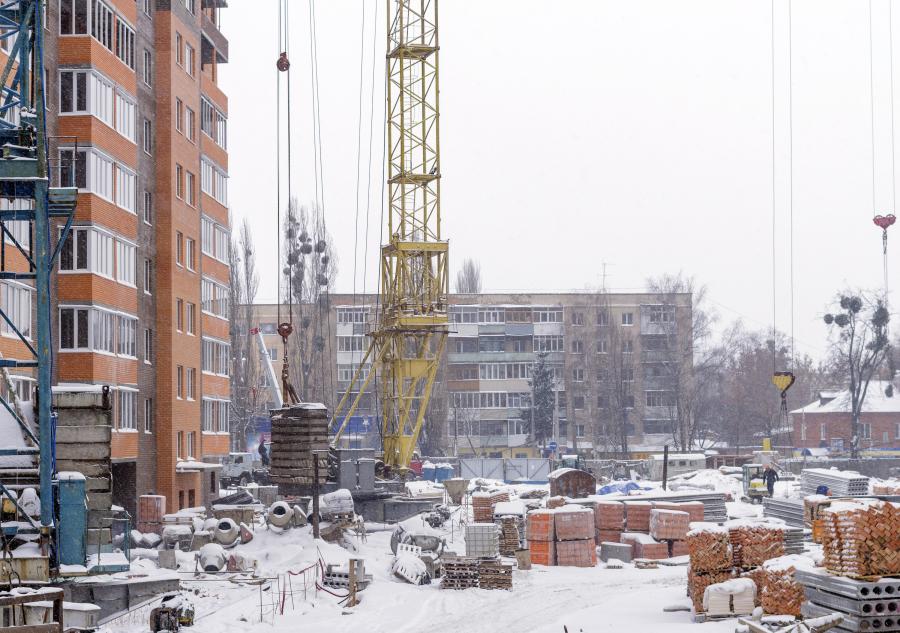
Mon January 27, 2020
Megan Wild – CEG Correspondent
As construction professionals who use cranes, you know how vital they are to your business and other business for whom you do work. Cranes are used 365 days a year, often long days, for extensive heavy lifting and transportation of just about any machinery and materials you could need for a large-scale project. That's why it's important to keep your crane well-maintained and in a satisfactory state of repair in order to complete your work on time and within budget.
The most expensive part of crane repair is not the cost of repairing your crane, but the loss of operating income for the period of time your crane is incapacitated. If your crane is out of service, you still pay for machine storage, labor, subcontractors, machinery rental and upkeep. Delayed project times even push back future project start dates.
This is why it's imperative to keep your crane's downtime to a minimum by ensuring it is well-maintained. This is perhaps most crucial during winter, when cold weather puts an acute strain on machinery, causing potential serious difficulties for your crane. Here's how these problems can be avoided.
"The key to managing any piece of construction equipment, cranes specifically, is the discipline of periodic preventive maintenance," said Jeff Tulish, Stephenson Equipment's Philadelphia branch manager and service manager. "You should monthly, quarterly and annually perform inspections and routine servicing of the equipment. The results of improper routine maintenance are major failures and increased downtime, and this negatively affects the O&O costs associated with construction equipment. Even in the idle months, construction equipment should be exercised and inspected monthly to prevent future jobsite breakdowns."
Stephenson Equipment is headquartered in Harrisburg, Pa., and has other branches in Pennsylvania and New York State.
Pay Close Attention to the Engine
The crane's engine is the heart of your machine. These precautions may seem subtle, but they are extremely effective in keeping your crane ticking over according to the folks at PalFleet Truck Equipment Company:
- Don't shock your crane into alertness. Let your machine heat up before putting it to work by keeping the engine on until it finds its optimum temperature for a smooth run. For this reason, it also may be advisable to only work in sunlight during the cooler seasons.
- It may be the right time to invest in a better-quality fuel to keep your engine in its best condition.
- Inspect the fuel tank and keep it clean. Dirt and water often accumulates in fuel, which can result in a system failure.
- Keep an eye on the filtration system, too. Contaminated air could lead to engine malfunction.
What Is the Coolant Situation?
Cooling systems not only protect your machine against freezing, but they also increase the temperature of boiling point, prevent corrosion and help keep shaft seals lubricated. Rapid coolant usage also could signal a leak or something wrong in the engine.
So, if there's no leak, does that mean you can just use the coolant indefinitely? According to David Turcotte the technical director at Valvoline, "If one uses a fully formulated coolant and a reasonable re-inhibition strategy that includes proper top off, the coolant may never need to be changed."
Checking the Batteries
Obviously, your crane relies upon the optimum functioning of its batteries. Occasionally, the battery electrolyte could dry up, so it's important to perform regular checks when it's cold out. What is often overlooked is the general cleanliness of a crane's internal mechanisms, so ensure all batteries are cleaned from debris and dirt. Also, double check that terminal cables are connected securely to facilitate a consistent current supply.
Tires, Pumps and Piston
Just like with your motor vehicle, the tires on your crane should be checked at frequent intervals over winter. Prepare to replace tires where damage has occurred and properly inflate those that remain in good working order. Pumps and pistons should be scrutinized at least once every six weeks for leaks, and replaced accordingly to avoid the more serious complications that can result from such a fault.
Lubricants
Just like we need water, cranes need lubrication — which means greasing and oiling. Greasing your crane is one of the most important things you can do to ensure its longevity. When the crane is sitting idle and without a load on the boom, be especially vigilant about greasing each section of the crane. Look at slide pieces, topside wear pads, slideway linings, side bars, guide rollers and cross-heads. Crane parts require greasing every 125 operating hours, so make sure you stick to a schedule.
But be careful, warned Dale Heiner, Stephenson Equipment vice president of service operations.
"Too much [grease] can be bad and to be honest, wasteful," he said. "We use an air-operated gun that sprays the grease on the boom sections. It is much faster and less wasteful. If you use too much grease, the extra just ends up on the ground or on the hood or windshield of the crane, and that's just a waste of money."
Cranes are an integral part of the efficiency and effectiveness of your business, and, of course, your bottom line. Be good to your crane, especially over winter months, and by catching the smaller problems as soon as possible, you can carry out repairs before major downtime ensues.
CEG
 Cranes Equipment
Cranes Equipment Articles
Articles Email Updates
Email Updates Sell Your Machines
Sell Your Machines

 Cranes Equipment
Cranes Equipment Cranes Dealers
Cranes Dealers Cranes Articles
Cranes Articles Email Updates
Email Updates Sell Your Machines
Sell Your Machines